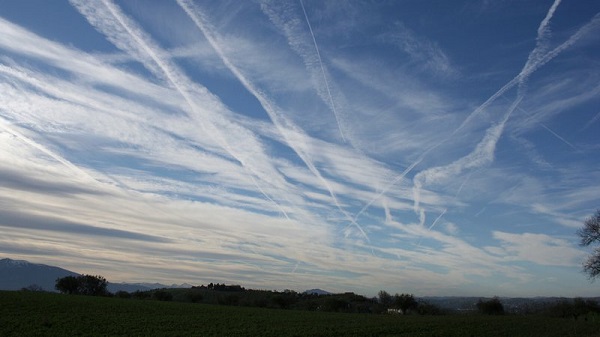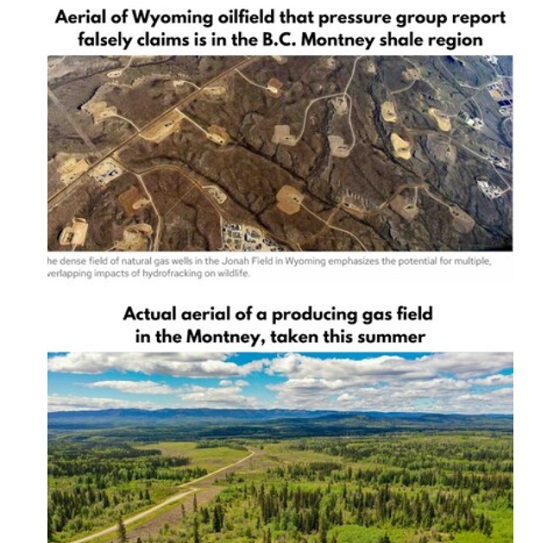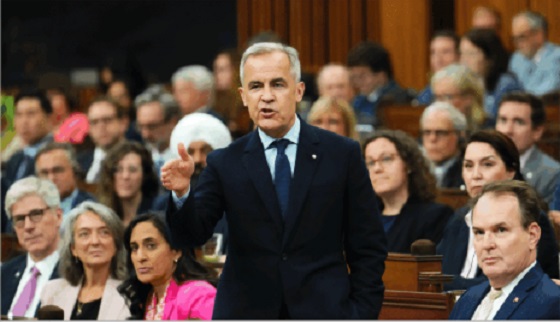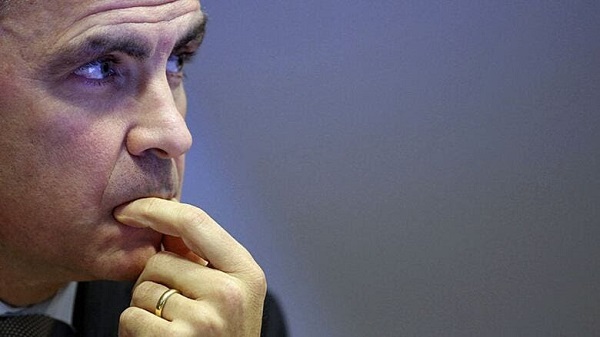Environment
UN report says nature is in worst shape in human history

Nature is in more trouble now than at any other time in human history, with extinction looming over 1 million species of plants and animals, scientists said Monday in the United Nations’ first comprehensive report on biodiversity.
It’s all because of humans, but it’s not too late to fix the problem, the report said.
Species loss is accelerating to a rate tens or hundreds of times faster than in the past, the report said. More than half a million species on land “have insufficient habitat for long-term survival” and are likely to go extinct, many within decades, unless their habitats are restored. The oceans are not any better off.
“Humanity unwittingly is attempting to throttle the living planet and humanity’s own future,” said George Mason University biologist Thomas Lovejoy, who has been called the godfather of biodiversity for his research. He was not part of the report.
“The biological diversity of this planet has been really hammered, and this is really our last chance to address all of that,” Lovejoy said.
Conservation scientists from around the world convened in Paris to issue the report, which exceeded 1,000 pages. The Intergovernmental Science-Policy Platform on Biodiversity and Ecosystem Services (IPBES) included more than 450 researchers who used 15,000 scientific and government reports. The report’s summary had to be approved by representatives of all 109 nations.
Some nations hit harder by the losses, like small island countries, wanted more in the report. Others, such as the United States, were cautious in the language they sought, but they agreed “we’re in trouble,” said Rebecca Shaw, chief scientist for the World Wildlife Fund, who observed the final negotiations.
“This is the strongest call we’ve seen for reversing the trends on the loss of nature,” Shaw said.
The findings are not just about saving plants and animals, but about preserving a world that’s becoming harder for humans to live in, said Robert Watson, a former top NASA and British scientist who headed the report.
“We are indeed threatening the potential food security, water security, human health and social fabric” of humanity, Watson told The Associated Press. He said the poor in less developed countries bear the greatest burden.
The report’s 39-page summary highlighted five ways people are reducing biodiversity:
— Turning forests, grasslands and other areas into farms, cities and other developments. The habitat loss leaves plants and animals homeless. About three-quarters of Earth’s land, two-thirds of its oceans and 85% of crucial wetlands have been severely altered or lost, making it harder for species to survive, the report said.
— Overfishing the world’s oceans. A third of the world’s fish stocks are overfished.
— Permitting climate change from the burning of fossil fuels to make it too hot, wet or dry for some species to survive. Almost half of the world’s land mammals — not including bats — and nearly a quarter of the birds have already had their habitats hit hard by global warming.
— Polluting land and water. Every year, 300 to 400 million tons of heavy metals, solvents and toxic sludge are dumped into the world’s waters.
— Allowing invasive species to crowd out native plants and animals. The number of invasive alien species per country has risen 70% since 1970, with one species of bacteria threatening nearly 400 amphibian species.
Fighting climate change and saving species are equally important, the report said, and working on both environmental problems should go hand in hand. Both problems exacerbate each other because a warmer world means fewer species, and a less biodiverse world means fewer trees and plants to remove heat-trapping carbon dioxide from the air, Lovejoy said.
The world’s coral reefs are a perfect example of where climate change and species loss intersect. If the world warms another 0.9 degrees (0.5 degrees Celsius), which other reports say is likely, coral reefs will probably dwindle by 70% to 90%, the report said. At 1.8 degrees (1 degree Celsius), the report said, 99% of the world’s coral will be in trouble.
“Business as usual is a disaster,” Watson said.
At least 680 species with backbones have already gone extinct since 1600. The report said 559 domesticated breeds of mammals used for food have disappeared. More than 40% of the world’s amphibian species, more than one-third of the marine mammals and nearly one-third of sharks and fish are threatened with extinction.
The report relies heavily on research by the International Union for the Conservation of Nature, or IUCN, which is composed of biologists who maintain a list of threatened species.
The IUCN calculated in March that 27,159 species are threatened, endangered or extinct in the wild out of nearly 100,000 species biologists examined in depth. That includes 1,223 mammal species, 1,492 bird species and 2,341 fish species. Nearly half the threatened species are plants.
Scientists have only examined a small fraction of the estimated 8 million species on Earth.
The report comes up with 1 million species in trouble by extrapolating the IUCN’s 25% threatened rate to the rest of the world’s species and using a lower rate for the estimated 5.5 million species of insects, Watson said.
Outside scientists, such as Lovejoy and others, said that’s a reasonable assessment.
The report gives only a generic “within decades” time frame for species loss because it is dependent on many variables, including taking the problem seriously, which can reduce the severity of the projections, Watson said.
“We’re in the middle of the sixth great extinction crisis, but it’s happening in slow motion,” said Conservation International and University of California Santa Barbara ecologist Lee Hannah, who was not part of the report.
Five times in the past, Earth has undergone mass extinctions where much of life on Earth blinked out, like the one that killed the dinosaurs. Watson said the report was careful not to call what’s going on now as a sixth big die-off because current levels don’t come close to the 75% level in past mass extinctions.
The report goes beyond species. Of the 18 measured ways nature helps humans, the report said 14 are declining, with food and energy production noticeable exceptions. The report found downward trends in nature’s ability to provide clean air and water, good soil and other essentials.
Habitat loss is one of the biggest threats, and it’s happening worldwide, Watson said. The report projects 15.5 million miles (25 million
Many of the worst effects can be prevented by changing the way we grow food, produce energy, deal with climate change and dispose of waste, the report said. That involves concerted action by governments, companies and people.
Individuals can help with simple changes to the way they eat and use energy, said the co-chairman of the report, ecological scientist Josef Settele of the Helmholtz Center for Environmental Research in Germany. That doesn’t mean becoming a vegetarian or vegan, but balancing meat, vegetables and fruit, and walking and biking more, Watson said.
“We can actually feed all the coming billions of people without destroying another inch of nature,” Lovejoy said. Much of that can be done by eliminating food waste and being more efficient, he said.
___
Follow Seth Borenstein on Twitter at www.twitter.com/borenbears .
___
The Associated Press Health and Science Department receives support from the Howard Hughes Medical Institute’s Department of Science Education. The AP is solely responsible for all content.
Seth Borenstein, The Associated Press
Environment
EPA releases report on chemtrails, climate manipulation

Quick Hit:
The Environmental Protection Agency under Administrator Lee Zeldin has released new online resources addressing public concerns about geoengineering and contrails. Zeldin stated the EPA is committed to transparency, publishing everything it knows about these controversial topics.
Key Details:
- New EPA Pages: Explain the science of contrails and debunk “chemtrail” claims, while outlining potential risks of solar geoengineering.
- Zeldin’s Statement: “Americans have legitimate questions… they deserve straight answers,” noting EPA’s concerns about geoengineering health and environmental risks.
- Legislative Context: Rep. Marjorie Taylor Greene plans to introduce a bill banning atmospheric chemical dispersals for weather modification purposes.
The Trump EPA is committed to total transparency. I tasked my team @EPA to compile everything we know about contrails and geoengineering to release to you now publicly. I want you to know EVERYTHING I know about these topics, and without ANY exception! https://t.co/izKBz0lFvr pic.twitter.com/FkOCgBm3K9
— Lee Zeldin (@epaleezeldin) July 10, 2025
Diving Deeper:
The Environmental Protection Agency on Thursday launched two detailed online resources aiming to give Americans what Administrator Lee Zeldin described as “total transparency” on contrails and geoengineering. In a video message, Zeldin said the pages were designed for “anyone who’s ever looked up to the streaks in the sky and asked, ‘What the heck is going on?’”
The EPA’s contrail page clarifies that condensation trails are a normal byproduct of jet aircraft exhaust, akin to car exhaust being visible on a cold day. The agency directly addressed claims that these are “chemtrails” — alleged intentional chemical releases for nefarious purposes like population control or weather modification — stating there is no evidence the federal government has ever used contrails to geoengineer or alter weather.
However, the agency acknowledged the reality of solar geoengineering research, particularly stratospheric aerosol injection (SAI), which aims to reflect sunlight to cool the planet. Zeldin noted that enthusiasm for such experiments has “set off alarm bells” within President Trump’s EPA, as the practice could deplete the ozone layer, damage crops, alter weather patterns, and create acid rain.
Currently, only one private U.S. company, Make Sunsets, has experimented with SAI and marine cloud brightening, though these remain in early research phases. Meanwhile, traditional weather modification, such as cloud seeding, has been conducted at state or local levels to alleviate droughts, not to control climate or populations.
The EPA also highlighted past U.S. government weather modification projects, including Operation Popeye during the Vietnam War, which attempted to extend the monsoon season to disrupt enemy supply lines. Some states, like Florida and Tennessee, have since passed laws banning geoengineering or weather modification without explicit approval.
Rep. Marjorie Taylor Greene (R-Ga.) recently pledged to introduce federal legislation criminalizing any injection or dispersal of chemicals into the atmosphere to alter weather or climate. Zeldin concluded that the EPA shares Americans’ concerns over geoengineering’s risks and emphasized that this marks the first time the agency has proactively addressed such public fears in this way.
Energy
B.C. Residents File Competition Bureau Complaint Against David Suzuki Foundation for Use of False Imagery in Anti-Energy Campaigns

From Energy Now and The Canadian Newswire
A group of eight residents of Northeast British Columbia have filed a formal application for inquiry with Canada’s Competition Bureau, calling for an investigation into the David Suzuki Foundation’s (the Foundation) use of false and misleading imagery in its anti-energy campaigns.
The complaint alleges that the Foundation has repeatedly used a two-decade-old aerial photograph of Wyoming gas wells to falsely depict modern natural gas development in B.C.’s Montney Formation. This area produces roughly half of Canada’s natural gas.
Key Facts:
- The misleading image has been used on the Foundation’s website, social media pages, reports and donation appeals.
- The Foundation has acknowledged the image’s true source (Wyoming) in some contexts but has continued to use it to represent B.C. development.
- The residents claim this materially misleads donors and the public, violating Section 74.01(1) of the Competition Act.
- The complaint is filed under Sections 9 and 10 of the Act, asking the Bureau to investigate and impose remedies including ceasing the conduct, publishing corrective notices, and returning proceeds.
Quote from Deena Del Giusto, Spokesperson:
“This is about fairness and truth. The people of Northeast B.C. are proud of the work they do to produce energy for Canada and the world. They deserve honest debate, not scare tactics and misleading imagery used to raise millions in donations. We’re asking the Competition Bureau to hold the David Suzuki Foundation to the same standard businesses face: tell the truth.”
Background:
Natural gas development in the Montney Formation supports thousands of jobs and fuels economic activity across the region. Accurate public information is vital to informed debate, especially as many Canadians live far from production sites.
SOURCE Deena Del Giusto
-

 Business24 hours ago
Business24 hours agoMark Carney’s Fiscal Fantasy Will Bankrupt Canada
-

 Business2 days ago
Business2 days agoCarney government should apply lessons from 1990s in spending review
-

 Entertainment2 days ago
Entertainment2 days agoStudy finds 99% of late-night TV guests in 2025 have been liberal
-

 Alberta23 hours ago
Alberta23 hours agoTemporary Alberta grid limit unlikely to dampen data centre investment, analyst says
-

 Opinion1 day ago
Opinion1 day agoCharity Campaigns vs. Charity Donations
-

 Frontier Centre for Public Policy2 days ago
Frontier Centre for Public Policy2 days agoCanada’s New Border Bill Spies On You, Not The Bad Guys
-

 Daily Caller19 hours ago
Daily Caller19 hours ago‘Strange Confluence Of Variables’: Mike Benz Wants Transparency Task Force To Investigate What Happened in Butler, PA
-

 Uncategorized2 days ago
Uncategorized2 days agoCNN’s Shock Climate Polling Data Reinforces Trump’s Energy Agenda




